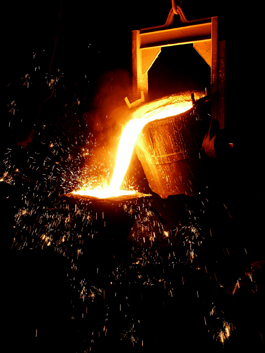The price of coal varies by coal rank and grade, mining method, and geographic region.1
Coal is classified into four main ranks—lignite, subbituminous, bituminous, and anthracite—depending on the amount and type of carbon it contains and the amount of heat energy it can produce. Prices are generally higher for coal with high heat content.
- The average annual sale prices1 of coal at mines by main rank of coal in 2022, in dollars per short ton (2,000 pounds) were:2
- bituminous$97.96
- subbituminous$16.55
- lignite$21.79
- anthracite$155.03
Coal prices at surface mines are generally lower than prices at underground mines. In locations where coal beds are thick and near the surface, such as in Wyoming, mining costs and coal prices tend to be lower than in locations where the beds are thinner and deeper, such as in Appalachia. The higher cost of coal from underground mines reflects the more difficult mining conditions and the need for more miners.
When coal is burned, it releases impurities that can combine with oxygen to form sulfur dioxide (SO2). When SO2 combines with moisture in the atmosphere, it produces acid rain that can harm forests and lakes. Because of environmental regulations limiting sulfur emissions, low-sulfur coals may sell for higher prices than high-sulfur coals.
Coal transportation costs can be significant
Once coal is mined, it must be transported to consumers. Transportation costs add to the delivered price of coal. In some cases, such as in long-distance shipments of Wyoming subbituminous coal to power plants in the eastern United States, transportation costs are more than the price of coal at the mine.
Most coal is transported by train, barge, truck, or a combination of these modes. All of these transportation modes use diesel fuel. Increases in oil and diesel fuel prices can significantly affect the cost of transportation, which affects the final delivered price of coal.
In 2022, transportation costs accounted for about 41% of the average delivered cost of coal to electric power plants: the national average transportation cost was $18.69 per short ton and the average delivered cost of coal was $45.78 per short ton.
Most coal is purchased for power plants
In 2022, the electric power sector accounted for about 92% of total U.S. coal consumption.
The price of coal can depend on the type of transaction
Most of the coal sold for electric power generation is sold through long-term contracts. Coal supplies are often supplemented with spot purchases of coal. Spot purchases are shipments of fuel purchased for delivery within one year. Spot prices can fluctuate based on short-term market conditions, but contract prices tend to be more stable. In 2022, the average delivered price of coal to the electric power sector was $44.51 per short ton, which includes both spot and contract purchases.
A more expensive coal is used to make iron and steel
In addition to producing electricity, coal is also used to produce coal coke, or coke, which is used in smelting iron ore to make steel.
Coke is made by baking coking coal, also called metallurgical coal, in special high-temperature ovens to remove non-carbon elements and compounds. The resulting coke is mostly carbon. Coking coal must be low in sulfur and requires more thorough cleaning than coal used in power plants, which makes the coal more expensive.
In 2022, the average delivered price of coking coal to coke producers was about $196 per short ton—about 4.4 times higher than the average price of coal delivered to the electric power sector.
The outlook for coal prices in the United States
In the Annual Energy Outlook 2023 Reference case, the U.S. Energy Information Administration (EIA) projects that U.S. coal prices will generally increase each year through 2050, based largely on certain assumptions about the coal and electricity markets and industrial sector demand.
1 Unless otherwise indicated, prices are nominal prices, or prices that have not been adjusted to remove the effect of changes in the purchasing power of the U.S. dollar. Prices that are adjusted for changes in the purchasing power of the U.S. dollar are identified as real prices.
2 Data source: U.S. Energy Information Administration, Annual Coal Report, October 2023
Last updated: Apri 17, 2024.

